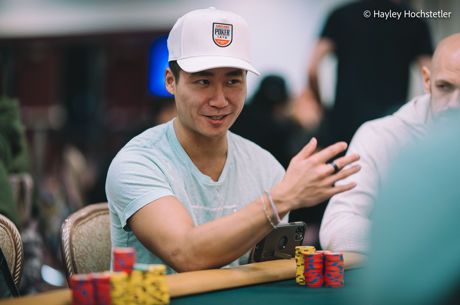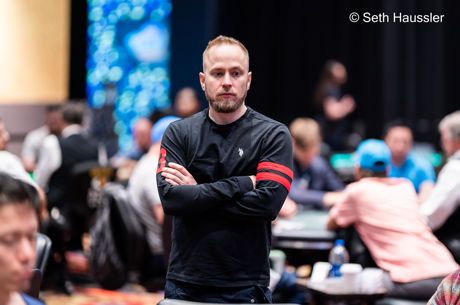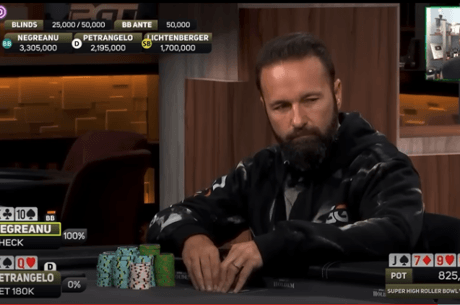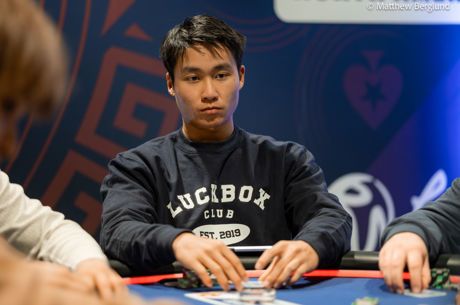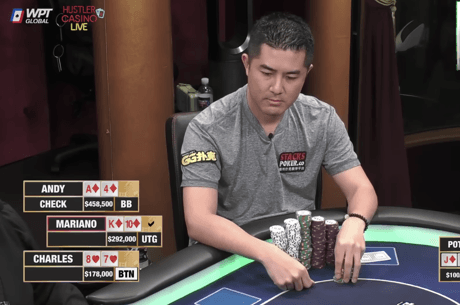Slowplaying Pocket Kings Against a Limper w/ Poker Vlogger Jaman Burton
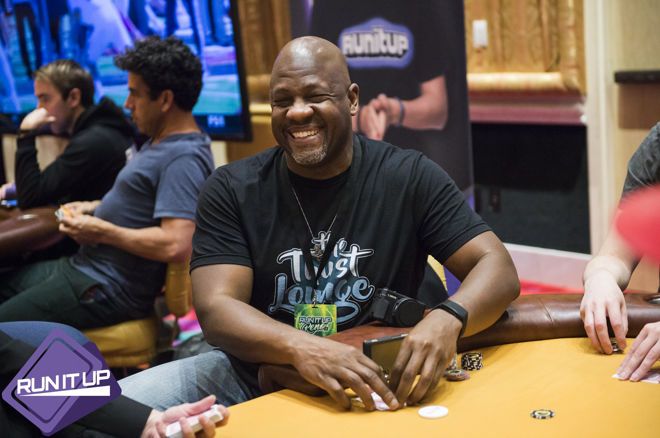
When you are playing live poker cash games and face a limp (call) from a recreational player they are not usually planning to fold! Popular poker vlogger Jaman ‘The Drawing Dead’ Burton finds himself exactly in this spot with a premium poker hand.
In this strategy column for PokerNews, I will discuss the poker strategy that you should look to employ when you face limpers in cash games and whether you should ever choose to slowplay. I also talk about what range of hands tight poker players choose to limp and then three-bet with!
Slowplaying in poker can have its merits in certain situations but it is important to recognize when and where these situations are.
This hand was played in Las Vegas in the Bellagio Poker Room during a poker cash game at $5/$10 stakes and about 300 blinds effective. The hand begins with a player limping in and Jaman deciding to raise to $40 from the small blind holding K♥K♣.
Poker Face Meaning – What Is a Poker Face and How to Get a Good One?
When playing with most recreational players, it is important to know that they are not planning on folding when they limp in. Because Jaman's opponent in likely planning to limp-call, I think he should raise it to something bigger like $60 or $70 to really get value with kings and give his opponent worse implied odds.
However, the middle position player did not call, they instead three-bet to $120. What do you think the opponent's limp-raising range looks like in this scenario?
- A: Big pairs and bluffs like suited ace-Wheel hands
- B: Big pairs, ace-king and ace-queen
- C: Only Aces
While many people think the opponent will always have pocket aces in this scenario, that is not the case. In a lot of these games, opponents will limp-raise with hands like pocket queens and ace-king. Lots of players are worried about running into aces, but I think you have to call or four-bet with pocket kings most of the time.
Jaman said he expected his opponent to be at the top of his range and he decided to just call, which I think is fine. But kings are really good, and getting your money in preflop with kings is probably the best play.

The flop landed 8♠8♥6♣ and Jaman checked, and his opponent surprisingly checked back. Jaman should check with his entire range but I am surprised the opponent didn't continuation-bet since it is difficult for Jaman to have an eight here.
The turn brought the 9♠ and Jaman decided to lead out for $130, about half-pot. The opponent called. The 7♠ on the river both brought in a spade flush and put a one-card straight on the board.
Most players assume their opponent won't have a straight in this situation, but they will occasionally show up with hands like ace-ten suited or ten-nine suited. Because of that, I think checking is the right play. I also think a small value bet is OK if you think you will get called by hands like queens or jacks.
Jaman said he tanked on the river deciding whether to check or check-raise for value, which I think he definitely should not do because he will not get called by worse hands. A check-raise could make sense as a bluff to try to get aces to fold.
He eventually decided to check and the opponent checked back. Jaman turned over his kings and when shocked when his opponent showed 10♦9♦ for a rivered straight.
I bet most of you are surprised that the opponent limp-reraised with the ten-nine suited, but I am telling you, recreational players will mix it up in cash games.
This is a spot where you have to be very careful not to narrow your opponent's range too quickly because that will result in you making errors on later betting rounds. I think the opponent made a big error on the river by not betting for value with his straight, but that ended up being good for Jaman!
For more on this hand check out my breakdown in the following video:
Jonathan Little is a professional poker player and author with over $7,000,000 in live tournament earnings. He writes a weekly educational blog and hosts a podcast at JonathanLittlePoker.com. Sign up to learn poker from Jonathan for free at PokerCoaching.com. You can follow him on Twitter @JonathanLittle.
Photo courtesy RunItUp


